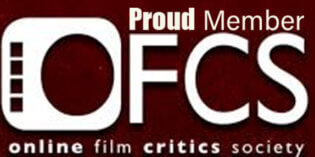A Study in Disney: ‘Alice in Wonderland’ (1951)
Disney is as much a part of our lives as love and death. It’s wrapped around us, and not just in our childhood. There are thousands and thousands of Disney movies by this point but the one that really shape the company and the culture are the animated features. Disney busted out of the gate in 1937, intending to create a new artform and make an evolutionary leap in cinema. So, every other day from now through March, I will be chronicling every single one of Disney’s canon animated features. It’s a fascinating journey, and a lot of fun too.

One constant in the story of Walt Disney seems to have been his ever-persistent passion for Lewis Carroll’s “Alice in Wonderland.” It is said that Disney read the book as a child and was so captivated by its bizarre and clever world that it stayed with him forever-after. His attempt to visualize Carroll’s world stretches all the way back to the 1920s when, through his short-lived Laugh-O-Gram Studios, Disney created a series called The Alice Comedies featuring a live-action actress having misadventures in a cartoon world. Later he would loosely adapt Lewis Carroll’s story into a 1936 short called Thru the Mirror starring Mickey Mouse. A feature might have seemed inevitable
It was a daunting task. Carroll’s book doesn’t exactly lend itself to a three-act structure and is therefore not an easy transference to a visual medium. The book is not intended to be visual; it is more a play on nonsense words, rhymes, riddles, songs and characters built out of half-track ideas. Putting the book to the screen would take a lot of time and talent.
What Disney was able to put together is probably as good a version of Carroll’s book as has ever been rendered for the screen. In fact, despite a great deal of criticism both casual and professional, it is rather brilliant. It is a vibrant, lively, colorful journey that doesn’t subsist on a trajectory but is more a collection of strange events and dysfunctional characters. You remember the journey but you don’t really remember the ending because it doesn’t really matter. It is not the point.
A lot of the criticism comes from the fact that the movie is so episodic, that the events of Alice’s journey happen and are then unceremoniously abandoned. Those looking for a firm narrative structure find themselves frustrated. Some Disney purist decry the film for not having a heart. It is hard to agree. The world inside this movie, while maddening, doesn’t need a heart. The point of the journey is that Alice has found herself in a world in which time and space seem to have no meaning. Here the landscape is dotted with silly and bizarre characters made up of words and songs, and populated with creatures that appear and disappear at will. It is almost as if Alice has landed in a world of literary run-off, as if she’s found herself in a dumping ground of rejected ideas ejected from much more structured material. This world has no shape or structure; just a maddening series of randomness, featuring one-note characters with a single-minded purpose: The Mad Hatter, The March Hare, The Door Mouse, Tweedle Dee and Tweedle Dumb, The White Rabbit.
What is interesting about these characters is that we never really understand their motives. Are they leading Alice astray? Are they dangerous? Some seem cool while others seem loaded with hostility, though we can never figure out which is a threat and which is just passively insane. Alice too has been criticized for being too passive and dull.
The film was criticized for being far too episodic and noisy for its own good. Disney historian Leonard Maltin, in his book The Disney Films, says “Alice in Wonderland is a very flashy and generally entertaining film but it lacks that essential thread that made Disney’s best features hang together, and moreover it lacks warmth.” Even Ward Kimball who animated Tweedle Dee and Tweedle Dum was dismissive of the final product: “It degenerated into a loud-mouthed Vaudeville show. It lacks warmth and an overall story glue.’ He blamed too many directors and too many hands getting in the way of a solid story. On both counts, it is hard to agree. This is not a story about warmth; it is a story about a girl trying to make sense of a world made up of screwy nonsense. If it had more emotional weight, then the coldness of the world would be less effective and there would be less motivation for Alice to press on.
In alleviating sentiment, Alice in Wonderland may have been ahead of its time. While it was not a massive hit upon first release in 1951, it was reassessed during the cultural art movements of the 1960s where the film was seen as a psychedelic trip and today its weirdness and its angular world fit right into the cultural lexicon that makes fashionable things like The Addams Family, A Nightmare Before Christmas and The Princess Bride; odd worlds full of odd characters whose terra firma is so bizarre that the plot hardly matters. It is a journey, a good one, one that is simply and delightfully mad.








